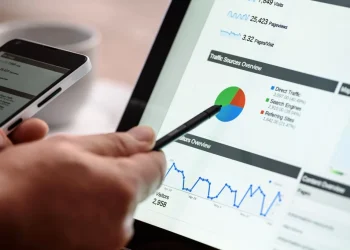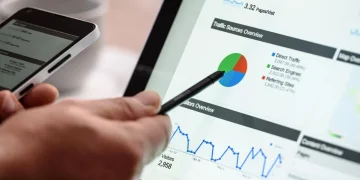Incline belt conveyors are essential equipment in various industries, helping to move products efficiently between different elevations. Whether you’re in manufacturing, packaging, or food processing, these conveyors play a crucial role in improving workflow and productivity. However, buying new equipment can be costly, which is why used incline belt conveyors offer a cost-effective solution without compromising on functionality.
This article will guide you through the benefits, considerations, and uses of used incline belt conveyors, helping you make an informed decision.
What Are Incline Belt Conveyors?
An incline belt conveyor is designed to transport items between different heights or levels, either moving them up or down a slope. They are commonly used in industries that require material handling solutions for lifting or lowering products, such as packaging, warehousing, food processing, and assembly lines.
The conveyor consists of a belt that runs over pulleys at each end, powered by a motor. The angle of incline can vary, and some conveyors come with cleats or sidewalls to prevent materials from slipping.
Why Consider Used Incline Belt Conveyors?
While new equipment is always appealing, used incline belt conveyors provide a budget-friendly alternative. Here are a few key advantages:
1. Cost Savings
Purchasing a used incline belt conveyor can significantly reduce initial investment costs, often saving up to 50% compared to new models. This allows businesses to allocate funds to other crucial areas, such as maintenance, labor, or expansion.
2. Faster Availability
New conveyor systems may take weeks or even months to be manufactured and delivered. In contrast, used incline belt conveyors are typically available immediately, reducing downtime and speeding up project timelines.
3. Sustainability
Opting for used equipment is an environmentally friendly choice. It reduces the demand for raw materials needed to produce new machines and minimizes waste. This can also contribute to your company’s sustainability goals and improve your corporate image.
4. Proven Durability
High-quality incline belt conveyors are built to last. Used models have often undergone rigorous testing in real-world conditions, so you can be confident that they will perform well. Many used conveyors still have years of life left in them, making them a reliable option.
Key Considerations When Buying Used Incline Belt Conveyors
When purchasing used incline belt conveyors, it’s important to assess several factors to ensure you’re making a worthwhile investment.
1. Condition of the Belt
The belt is the most critical part of the conveyor system. Check for signs of wear and tear, such as fraying edges, worn-out sections, or discoloration. If the belt needs replacement, this could add to the overall cost.
2. Motor and Drive System
Make sure the motor is in good working condition. The power required depends on the slope and the type of material being transported. Test the motor and drive system to ensure it can handle your operational demands.
3. Incline Angle and Length
Determine if the incline angle and length of the conveyor meet your specific needs. A steeper incline might require a conveyor with cleats or additional support to prevent materials from sliding. Make sure the dimensions fit your operational space.
4. Load Capacity
Ensure that the conveyor can support the weight of the materials you plan to transport. Overloading a conveyor can lead to mechanical failure, belt slipping, and reduced efficiency.
5. Previous Use and Maintenance History
If possible, ask for the conveyor’s history. Knowing how the conveyor was used and maintained can give you insights into its longevity and potential future performance.
Common Applications of Incline Belt Conveyors
Used incline belt conveyors are versatile and can be adapted for a wide range of industries and applications, including:
1. Food Processing
In food processing plants, incline belt conveyors are used to transport raw materials, ingredients, and finished products between different stages of production. With the right material, such as food-grade belts, they can safely handle items without contamination.
2. Packaging and Assembly Lines
Incline conveyors help move products between different conveyor lines or from a production area to a packaging area. They are ideal for assembly lines where different stages are positioned at various elevations.
3. Mining and Quarrying
Heavy-duty incline belt conveyors are commonly used in mining and quarrying to transport minerals and materials between processing plants, storage areas, and loading docks.
4. Warehousing and Distribution
Incline belt conveyors are often used in warehouses to move boxes, cartons, and pallets between floors or conveyor lines, streamlining the distribution process.
Tips for Maintaining Used Incline Belt Conveyors
Proper maintenance is key to extending the life of used incline belt conveyors. Regular inspections can prevent costly breakdowns and ensure smooth operation. Here are a few maintenance tips:
- Check the belt tension and alignment regularly to avoid slipping or belt damage.
- Lubricate the motor and pulleys as per the manufacturer’s recommendations.
- Clean the belt and conveyor system to prevent the accumulation of debris or product residue, which can affect performance.
- Replace worn-out parts promptly to avoid further damage and reduce downtime.
Conclusion
Investing in used incline belt conveyors can offer substantial cost savings without sacrificing quality or performance. These conveyors are a versatile and durable solution for industries that need efficient material handling between different elevations. By considering key factors such as condition, motor efficiency, and load capacity, you can find the perfect used incline belt conveyor to enhance your operations.
Whether you’re in food processing, packaging, mining, or warehousing, used incline belt conveyors can be a smart, sustainable, and cost-effective choice for your business.
















